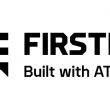Seeing is believing
On streets and roadways around the world, video cameras give traffic managers a real-time view of vehicular activity. When traffic slows down, the images help personnel assess the cause and decide how to respond. And when those images are distributed to the public over the Internet, they also may help travelers decide which routes to take.
In a growing number of locations, video cameras also are assisting traffic managers when there’s no pair of eyes to look at their images. Using machine-vision technology, video traffic-detection systems count vehicles, gauge their speed, determine when traffic has stopped and sense when vehicles are lined up at red lights.
Transportation departments use data extracted from such video feeds to control traffic signals, monitor traffic on highways, detect incidents and collect traffic statistics for planning purposes, among other applications.
A video traffic-detection system consists of a camera connected to a processor, which analyzes the incoming image stream. “It’s looking for edges, it’s looking for changes in the background, it’s looking for contrast, in order to reliably detect vehicles,” said Doug Carter, a representative with Peek Traffic Corp., headquartered in Palmetto, Fla. Peek offers two video detection systems, the Uni Trak 2 and the newer VideoTrak IQ.
Meanwhile, the Autoscope system, developed by Image Sensing Systems of Saint Paul, Minn., and marketed by Econolite of Anaheim, Calif., uses a two-step detection process, said Dave Candey, technical support manager at Econolite. First, when it detects a change in the video image, it runs algorithms to test whether the new object is a shadow, blowing trash or other non-relevant artifact. If the object seems to be a vehicle, the software applies a second set of tests that are specific to the application in question.
“For a freeway entrance ramp, when we’re looking for wrong-way vehicles, we’re looking for direction of travel against the flow — that kind of thing,” Candey said. Autoscope comes with a toolbox of tests that the user deploys to set up the unit for the correct application.
Along with sensing whether vehicles are present, a video detection system can, to some extent, determine what kinds of vehicles they are. “Statistics such as classification by vehicle length can also be used to determine medium-to-heavy truck movement, and that information can be used for roadway surface maintenance planning,” said Robert Ung, director of product management at Iteris, a vendor of video detection systems and other traffic-management solutions based in Santa Ana, Calif.
Video detection systems offer an alternative to the in-ground sensors that transportation departments have deployed for many years. Most of those older systems use inductive loops or magnetometers, devices that are embedded in the road surface and sense the presence of vehicles above them.
The video-based systems are non-intrusive. The cameras and their processing cards are installed at the roadside, so they don’t require making cuts in the road bed.
The initial cost to install a video detection system is equal to or slightly greater than the cost to implement a set of in-ground loops or magnetometers, Ung said. “However, in assessing overall life-cycle cost over 10 to 20 years, video detection is significantly less.”
The long-term cost advantage arises primarily because video-based systems don’t take much of a beating. “Loop detectors, because they’re an in-ground solution, are subject to weather and the vehicle traffic itself,” Carter said. Heavy trucks rumbling over loops pose a particular hazard. “Those loops deteriorate over time.”
Contractors performing road repairs or cutting asphalt for utility companies also may destroy in-ground devices, producing extra costs for the transportation departments that have to replace them.
Also, any time a transportation department redesigns a roadway — perhaps adding a lane or creating a left-turn lane — the existing loop configuration becomes obsolete, and the department needs to replace it.
But reconfiguring a video detection system involves simply redrawing some lines on a computer display. “It’s easily adaptable if lanes change or traffic patterns change,” said Brad Anderson, traffic control supervisor with the city of Fayetteville, Ark.’s transportation division.
Fayetteville uses video detection systems from Peek Traffic to control signal lights at approximately 60 intersections. The city installed its first set of cameras and controllers about a decade ago at its busiest intersection, a four-way that is ten lanes wide on one leg and six lanes wide on the other.
“It’s not a great place to cut inductive loops into, because of the lane closures,” Anderson said. To keep from disrupting traffic, the city decided to try a non-intrusive system. Ever since then, Fayetteville has been using video systems to replace loop detectors that wear out.
A final advantage of video-based systems is the video itself. “Even though video vehicle-detection cameras are typically not pan, tilt, zoom-type cameras, there are four cameras at each intersection, thus virtually providing 360 degrees of ‘free’ surveillance to the traffic management center,” Ung said.
In New Haven, Conn., video from the Autoscope system provides an extra advantage at intersections where those systems control the traffic signals. Sometimes, motorists will call the traffic management center to complain that they’ve been sitting at a red light for an unreasonably long time, said Bijan Notghi, a traffic engineer with the city. Video images transmitted to the traffic management center help Notghi determine whether the motorist is exaggerating, or there really is a problem.
“You can view it and say, ‘This poor person really is stuck,’” he said. Then he can send someone into the field to troubleshoot.
New Haven has been using Autoscope detectors for about five years, Notghi said. The city has installed about 200 cameras, mainly at intersections, but in some cases also at approaches to intersections.
Traffic-signal control is the most common application for video-based traffic-detection systems. In one recent innovation, some departments use the systems not only to control the duration of red lights based on current traffic volumes, but to extend red lights for safety purposes.
“We have used Autoscope for detecting pedestrians still in the crosswalk,” Candey said. When necessary, the system cues the signal controller to maintain the red light until the pedestrian gets safely to the other side. “It’s not the most common application,” he said. “But there’s definitely a move afoot among many agencies, and there are industry committees looking at how to better serve pedestrians in traffic.”
Traficon, a Belgian company with U.S. headquarters in Las Vegas, recently introduced a new product with the same goal in mind. Its SafeWalk system is designed to detect pedestrians and cyclists, both at intersections and in mid-block, and provide this information to the signal controller to take into account as it triggers the traffic signals.
On highways and bridges and in tunnels, the arguments for using video-based detection systems are somewhat different than the arguments that apply at intersections. Along a highway, there’s less infrastructure available for mounting cameras, and that constrains the way cameras can be pointed at free-flowing traffic. As a result, the data obtained from cameras aimed at highway traffic isn’t as precise as data that in-ground sensors would provide, Ung said. “But it is sufficient information to project congestion, incidents and things like that.”
And since roadside cameras can do double duty — giving traffic managers a real-time look at road conditions once the automated system detects a problem — video-based detection provides an extra benefit on the highway.
One place where cameras play that dual role is in southeastern Florida, where the Florida Department of Transportation (FDOT) uses machine-vision technology to assist the human operators who monitor video streams from cameras on Interstates 95, 595 and 75.
Since 2009, FDOT’s District 4 has been deploying cameras on the roadways in conjunction with the VisioPAD automatic incident detection (AID) system, manufactured by the French company Citilog. FDOT uses a fiber-optic network to transmit video from the cameras — which totaled nearly 300 in January 2011 — to its traffic management center (TMC). There, two staff members are assigned at all times to watch the incoming images for accidents, stopped cars and other anomalies.
Since the operators obviously can’t monitor images from all 300 cameras at once, the VisioPAD system provides supplementary monitoring. Installed in the TMC, the system’s processors analyze the incoming videos for atypical activity. When the system finds something unusual, it notifies the human operators.
“It will turn an alarm on the screen and say this camera has detected an anomaly of some sort,” said Daniel Smith, intelligent transportation systems operations manager at FDOT District 4 in Fort Lauderdale. “And you can just click on the camera and look.”
FDOT uses a different kind of non-intrusive detection system — based on microwave technology — to monitor traffic volume, as well as speed and lane occupancy on the interstates, Smith said. But the AID system provides a useful supplement to TMC personnel who are looking for trouble on the highways.
“About 15% of the incidents we detect are from that system,” he said.
Related Stories

















Very interesting, I hope this
Very interesting, I hope this system will grow in international networks as well, it will help prevent some car accidents as well. Maybe I’m naive to think about it, but I was in a car accident and only luck saved my life. I don’t want this to happen to other people.